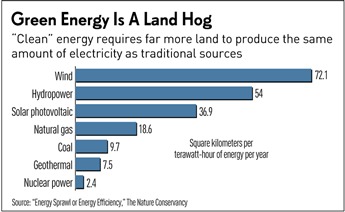Why China Needs North American Expertise to Develop Its Vast Shale Gas Resource
But China is more in the habit of stealing technology than of working cooperatively with outsiders. Will China's desperate need to develop its natural gas resource force it to learn to work well with others?
Getting shale out of the ground has proved challenging as China’s shale deposits also have more clay than the brittle marine shale of the US, making fracking more time consuming and less productive. This is compounded by lack of infrastructure that makes the shale revolution possible in the US, including an extensive gas pipeline network and oil workers trained in fracking techniques. Issues that might limit this potential include a lack of water resources around China’s western shale reserves and the deep nature of some basins, coupled with hilly terrain. These factors combined with Chinese companies’ relative inexperience are likely to make such projects more costly than their US counterparts... China's main motive for exploiting shale-gas reserves would be for power generation, and perhaps even for gassifying its transportation system. But the resulting natural-gas liquids could also feed big new petrochemical capacities.
China’s recently announced development plans for shale gas production may be overly optimistic, considering the geological complexities of China’s shale formations, according to natural resources expert GlobalData. The report suggests that the geology of China’s shale gas reserves, as well as the country’s water shortages, insufficient pipeline infrastructure, government control over natural gas prices, and environmental issues will all challenge China’s ambitions, despite the country’s extensive plans to support and encourage industry growth. China’s five-year shale gas development plan for 2011-2015, released on March 16, 2012, boasts the target of 6.5 billion cubic meters (bcm) of annual shale gas production by 2015. The plan states that a two-year appraisal of China’s shale gas reserves, an increase in China’s expertise on shale gas technologies, and the development of a regulatory framework will also be accomplished. However, the industry remains cynical of the ambitious production targets.
The Chinese government promises to support the research and development (R&D) of shale gas technology, and will also accelerate the process permitting investors to develop shale gas reserves. A contract management system will also be put into place to control and monitor industry activity. China will also consider the introduction of subsidies for shale gas projects, which will assist companies with obtaining a waiver or reduction of their license fees, priority for land use permits, and exemption of custom duties for the import of shale gas equipment and related technologies which is unavailable in China. Essentially, the government aims to provide an adequate policy environment for huge shale gas development. The construction of natural gas pipelines will be encouraged at shale gas reserves that are close to existing gas pipeline networks, and the construction of small-scale Liquefied Natural Gas (LNG) or Compressed Natural Gas (CNG) facilities will be encouraged at shale gas reserves remote from existing pipelines. However, the development of the domestic pipeline network will take time and money, and this is expected to slow the pace of shale gas development. China aims to achieve a commercial level of shale gas production which has so far only been achieved in North America.
However, Chinese shale gas companies cannot currently use the high performing drilling technologies used to extract shale gas in the US, as further research is needed to adapt the US’s drilling methods to China’s very different geology.... Lastly, the Chinese government is expected to encourage international exchanges and co-operation, yet state control over natural gas prices will keep natural gas prices artificially low, not reflecting the realities of the natural gas market. Shale gas development companies will therefore have little incentive for development, as profitability will be minimal. With the development of shale gas requiring huge capital investment, the industry remains uninspired as government policies, especially on pricing, threaten to remove any financial attraction from the industry.
If China’s plans are successfully implemented, shale gas will change the pattern [of] China’s energy consumption. _China's Race to Develop Its Shale Resource
In fact, China's main motive for developing its vast shale gas resource will be to negotiate better gas prices with suppliers, including Russia's Gazprom. At least in the beginning. Later, China will want to use methane and natural gas liquids as fuels and as feedstocks for chemical processes -- to substitute for oil based products.
China needs to reduce its dependency on oil in any way it can. This will mean eventually using nuclear process heat to convert natural gas -- and coal -- to liquid fuels, chemicals, fertilisers, polymers, and other essential products.
But China desperately needs outside help to overcome the many obstacles it is facing. For this, China will need to discover a new way of honestly working with international commercial entities. Achieving such honest cooperation may be the most difficult obstacle of all for China to overcome.

















